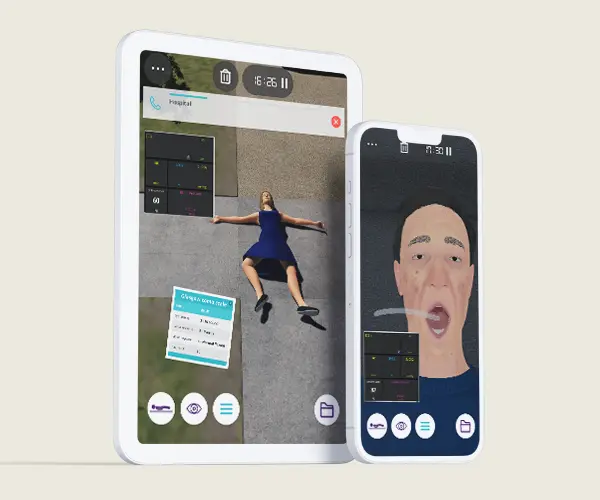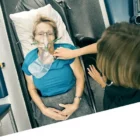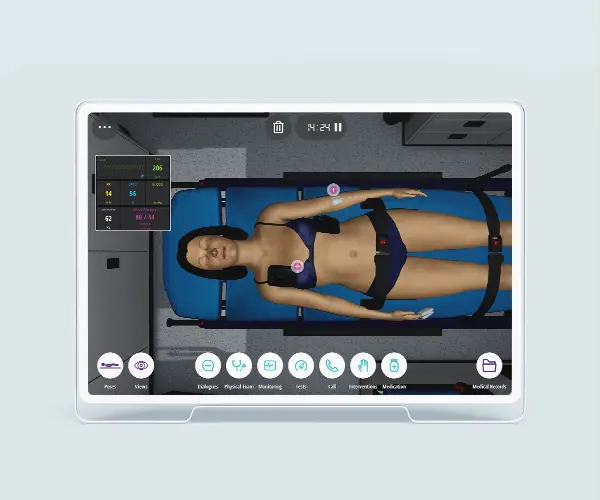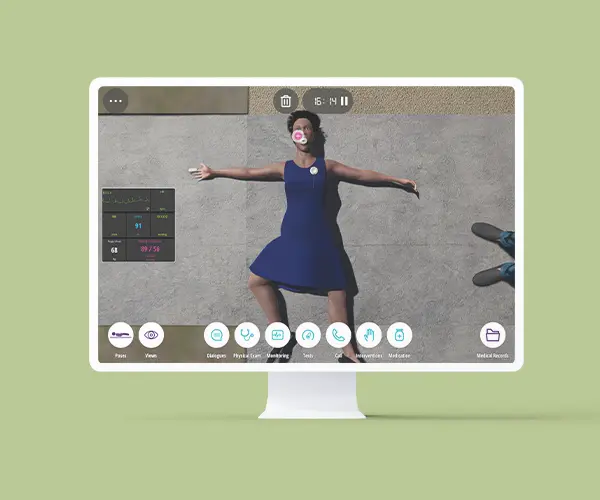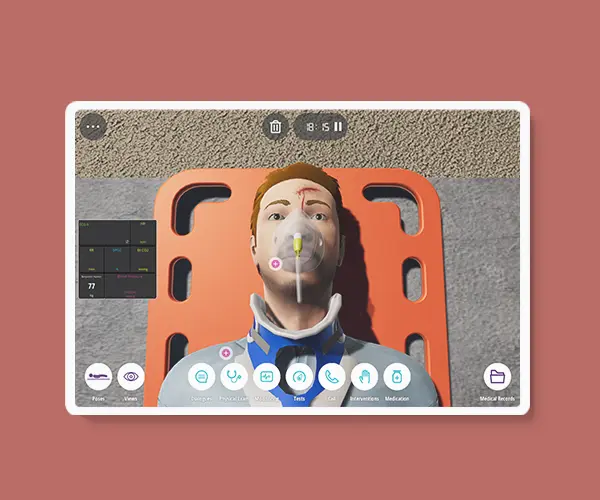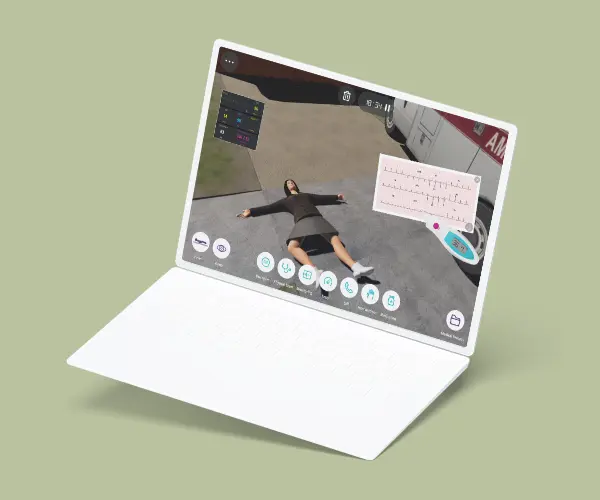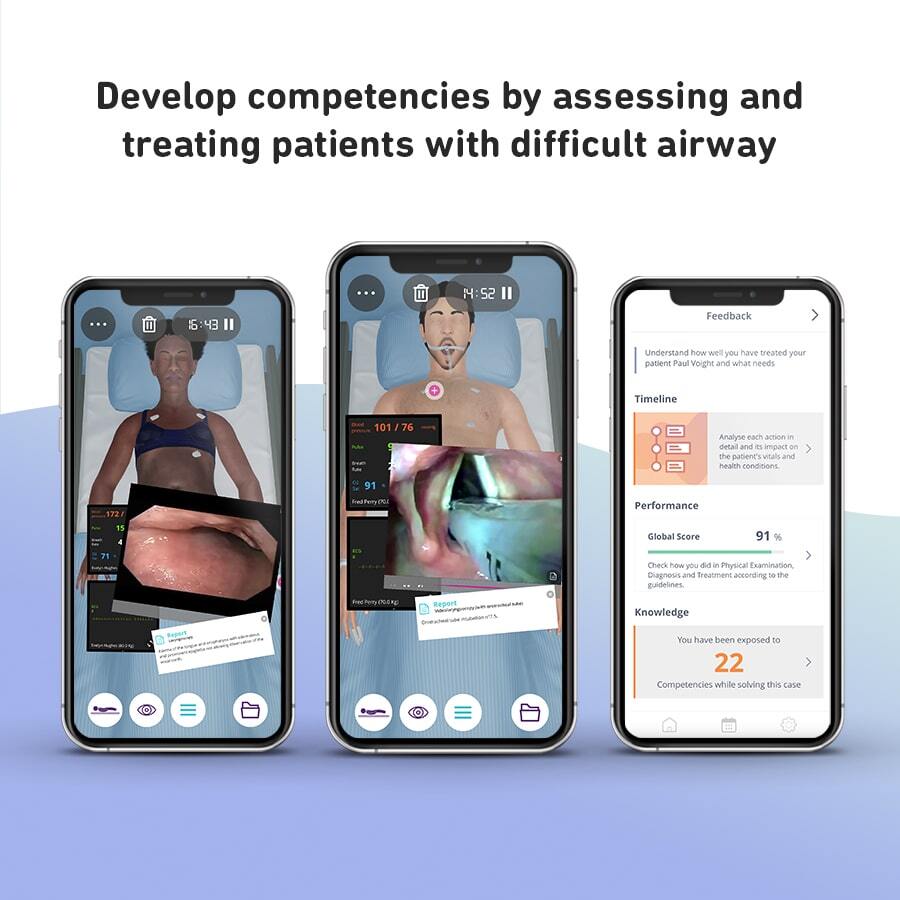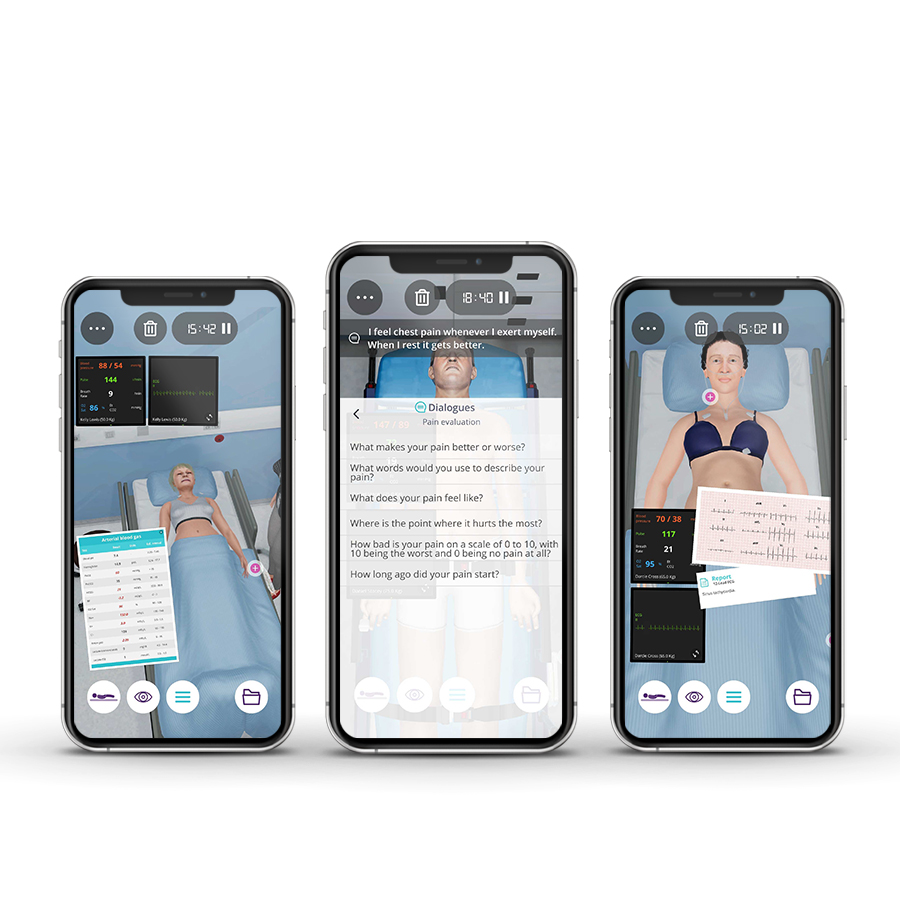Description
Course type: Online; Self-Paced
Specialty: Respiratory
Language: English / Portuguese
Resources: Handbook
Level: Intermediate
Target: Paramedic
Modules: 5
Durations: 2 months
Time Effort: Up to 110 min per module
Certificate: Yes
Course Description
Airway management is a series of steps and actions to ensure an open path for ventilation. Knowledge and skills in this area are essential for paramedics. Ensuring a permeable airway is essential for the patient’s prognosis.The incidence of EMS calls for patients with breathing difficulties is high, specially by patients who require some form of intervention in the airway.
Paramedics: Airway and Breathing Management course allows paramedics to develop their skills and critical reasoning in the pre-hospital environment to be able to provide care to patients with airway alterations and respiratory pathologies, namely, asthma exacerbation, pulmonary edema, shortness of breath, impaired airway and anaphylaxia.
Course Overview
- 5 Modules
• 5 virtual patient cases of a basic level of complexity. - Average Time to practice (per module)
• Clinical Scenario: 20 minutes per attempt (3 attempts: 60 minutes)
• Final attempt (if applicable): 20 minutes
• Multiple Choice Question: 5 minutes
• Feedback Area: 10 minutes
• Learning Objectives and Scientific References: 5 minutes - Online, Self-paced
You have up to 2 months to complete the 5 modules at your own pace. - Certificate of Completion
Learning Objectives
• Assess the security of care;
• Develop skills in understanding a patient’s clinical history applying SAMPLE;
• Assess pain with OPQRST;
• Assess and performed advanced prehospital interventions;
• Provide adequate treatment according to signs and symptoms;
• Recognize the signs and symptoms of the airway obstruction;
• Ensure airway permeability through secretions aspiration;
• Identify the signs of bronchospasm;
• Provide adequate ventilation and evaluate effectiveness;
• Provide specialized care during transport.
Clinical Competencies
Safety
• Universal safety measures procedures
• Promote patient safety
Airway and Breathing
• Airway – naso/oropharyngeal; supraglottic; Endotracheal intubation
• Chest tube placement – assist only
• Oxygen therapy (nasal cannula; non-rebreather; simple face mask; high-flow mask)
• Pulse oximetry
• Suctioning – upper airway
• CPAP
Circulation
• Assess and interpret pulse (rate, rhythm and volume)
• Cardiac monitoring – 12-lead ECG (interpretive)
• Cardiopulmonary resuscitation (CPR)
• Cardioversion – electrical
• Defibrillation – manual
Medication- Routes
• Aerosolized / nebulized
• Intramuscular
• Intravenous
• Intranasal – unit-dosed, premeasured
• Mucosal / Sublingual
• Oral
Module 1 – Progressive dyspnea
Context: There are several conditions that can result in blockage or obstruction of the airway leading to a compromised airway. Formulating a care strategy based on data acquired through constant monitoring is crucial to the success of securing the airway.
Virtual Scenario: Benjamin has a ten-year history of COPD and has been hospitalized over the last year due to recurrent respiratory tract infections.
Module 2 – Bee sting
Context: Allergies occur when a person’s immune system overreacts to a substance called an allergen. This allergic reaction can be a dangerous and potentially fatal condition.
Virtual Scenario: Emily was found on the street by a bystander, complaining of trouble breathing and feeling like she was going to pass out.
Module 3 – Short of breath in spring
Context: Certain agents can cause edema and inflammation of the airway. The muscles around the airway contract and produce extra mucus, causing the bronchi to constrict. The key to proper treatment is to recognize and treat these symptoms early to avoid a life-threatening emergency.
Virtual Scenario: Don is a full-time gardener at a hotel and usually has a lot of work to do. It is springtime and after arriving home, Don felt very short of breath and called for an ambulance.
Module 4 – Shortness of breath
Context: Shortness of breath (SOB) is defined by the American Thoracic Society as “a subjective experience of respiratory distress that consists of qualitatively different sensations that vary in intensity”. Sensations include exertion, tightness in the chest, and shortness of breath (feeling of lack of oxygen). It is important to assess the intensity of the different sensations, the degree of suffering involved, and their burden or impact on activities of daily living.
Virtual Scenario: Josephine was on her way to the bakery shop when she felt unwell.
Module 5 – Worsening dyspnea over the past few weeks
Context: Breathing can be difficult due to a condition caused by excess fluid in the lungs. Fluid can accumulate in the lungs for a variety of reasons, such as heart disease, pneumonia, exposure to certain toxins and medications, trauma to the chest wall, and travel or exercise at high altitudes.
Virtual Scenario: Joseph is known to have congestive heart failure and has experienced progressively worsening dyspnea over the past few weeks.
Authors and Speakers
With a multidisciplinary group of international clinical reviewers, Body Interact ensures a high standard of accuracy, diversity, and impact of its course.
Scientific References
- Cunningham C, Richard K. National Model EMS Clinical Guidelines. National Association of State EMS Officials. 2022; Version 3.
- National Association of State EMS Officials. National EMS Scope of Practice Model.2019; DOT HS 812 666
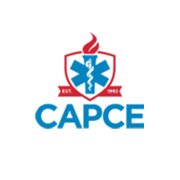
CAPCE – The Commission on Accreditation for Pre-Hospital Continuing Education
F3 accreditation
9 hours of continuing education
The Commission on Accreditation for Pre-Hospital Continuing Education (CAPCE) maintains standards for the delivery of emergency medical services (EMS) continuing education. It was chartered in 1992 to help students make informed decisions regarding the quality of educational activities.


